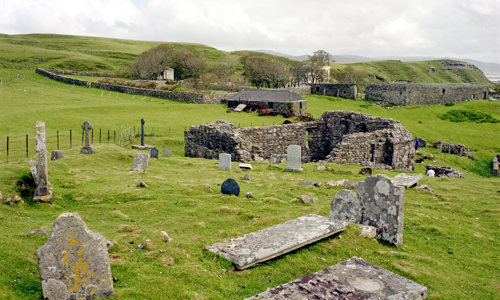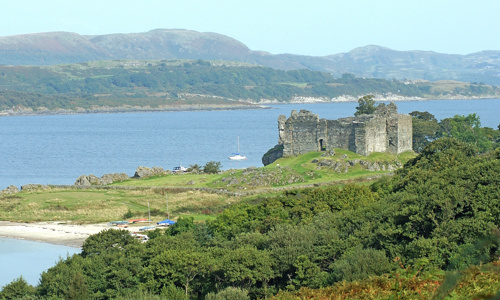History
Iona is a holy isle and has been described as the birthplace of Christianity in Scotland. St Columba and 12 companions came here from Ireland in AD 563. The monastery they founded was one of the most important and influential in the British Isles. It sent missionaries to northern Britain to convert people to Christianity.
Columba’s fame has brought pilgrims to Iona since the 7th century. Visitors still follow a route similar to the Sràid nam Marbh (‘Street of the Dead’) taken by pilgrims of old. But it now ends at a 13th-century abbey, which stands on the site of Columba’s church.
Four tall, intricately carved crosses, dating from the 8th and 9th centuries, once stood close to the abbey. Three can now be seen in the Abbey Museum, while one is still in place. Iona was a leading artistic centre from the 8th century, and sculptors, metalworkers and manuscript illuminators flourished here.
The small graveyard of Reilig Odhráin is the final resting place of local clan chieftains and ‘Kings of the Isles’. It has been used as a graveyard into recent times. When the graveyard was extended in the 1970s, important evidence was found of timber buildings associated with the Columban monastery.
Iona’s spiritual life continues today, through the work of the Iona Community.
Columba’s monastery
The island of Iona seems remote today. But it was at the centre of the life of the Irish Church, as it was easily accessible by boat from mainland Ireland and Scotland. Iona became an internationally renowned centre of spirituality, learning and art.
The only visible remains of Columba’s monastery are:
- the great vallum (earthen bank) that enclosed the holy site and which pre-dates the monastery
- Tòrr an Aba (‘Hill of the Abbot’) where Columba is said to have had his writing hut
Iona is a rich archaeological landscape, and much more of the early monastery may survive beneath the upstanding remains.
St Columba’s Shrine, a small stone building beside the door to the abbey church, may date from the 9th or 10th century. By this time, Viking raids blighted the coasts of the British Isles, and raids on Columba’s monastery were a frequent occurrence.
Early in the 9th century, some of the saint’s relics were taken for safekeeping to Dunkeld in Perthshire, and Kells in Ireland. The famous Book of Kells, now on display in Dublin, was probably made on Iona.
A place of pilgrimage
Iona has been an important place of pilgrimage throughout history and remains so today. Its architecture reflects the great political and economic importance of pilgrims: the monastic economy depended on Christians drawn to Iona by the sanctity of St Columba.
To aid pilgrimage, the church and abbey:
- would have been harled – covered in thick white render – and thus easy to see from a distance
- were laid out to receive and direct around the site the many visiting Christians who hoped to gain the blessing of the saint
The Benedictine abbey
Somerled, ancestor of the MacDonald Lords of the Isles, became patron of Iona in the mid-12th century. While ‘King of the Isles’, he built St Oran’s Chapel as a family burial place. An Augustinian nunnery was established nearby around the same time.
Somerled’s son Ranald later re-established the old monastery as a Benedictine abbey. This reoriented its patronage away from the Irish Church and towards Europe.












